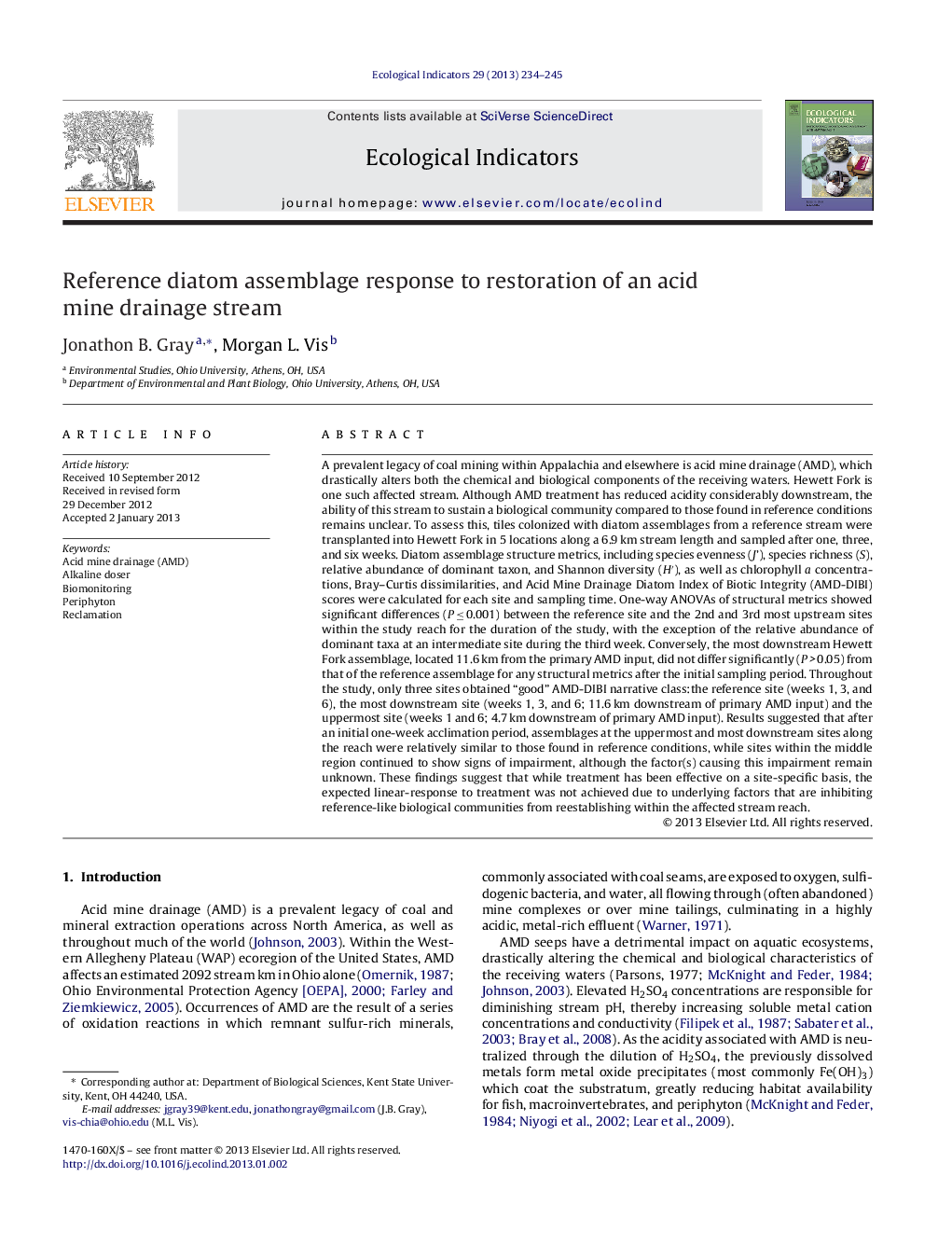| کد مقاله | کد نشریه | سال انتشار | مقاله انگلیسی | نسخه تمام متن |
|---|---|---|---|---|
| 4373481 | 1617171 | 2013 | 12 صفحه PDF | دانلود رایگان |

A prevalent legacy of coal mining within Appalachia and elsewhere is acid mine drainage (AMD), which drastically alters both the chemical and biological components of the receiving waters. Hewett Fork is one such affected stream. Although AMD treatment has reduced acidity considerably downstream, the ability of this stream to sustain a biological community compared to those found in reference conditions remains unclear. To assess this, tiles colonized with diatom assemblages from a reference stream were transplanted into Hewett Fork in 5 locations along a 6.9 km stream length and sampled after one, three, and six weeks. Diatom assemblage structure metrics, including species evenness (J’), species richness (S), relative abundance of dominant taxon, and Shannon diversity (H′), as well as chlorophyll a concentrations, Bray–Curtis dissimilarities, and Acid Mine Drainage Diatom Index of Biotic Integrity (AMD-DIBI) scores were calculated for each site and sampling time. One-way ANOVAs of structural metrics showed significant differences (P ≤ 0.001) between the reference site and the 2nd and 3rd most upstream sites within the study reach for the duration of the study, with the exception of the relative abundance of dominant taxa at an intermediate site during the third week. Conversely, the most downstream Hewett Fork assemblage, located 11.6 km from the primary AMD input, did not differ significantly (P > 0.05) from that of the reference assemblage for any structural metrics after the initial sampling period. Throughout the study, only three sites obtained “good” AMD-DIBI narrative class:the reference site (weeks 1, 3, and 6), the most downstream site (weeks 1, 3, and 6; 11.6 km downstream of primary AMD input) and the uppermost site (weeks 1 and 6; 4.7 km downstream of primary AMD input). Results suggested that after an initial one-week acclimation period, assemblages at the uppermost and most downstream sites along the reach were relatively similar to those found in reference conditions, while sites within the middle region continued to show signs of impairment, although the factor(s) causing this impairment remain unknown. These findings suggest that while treatment has been effective on a site-specific basis, the expected linear-response to treatment was not achieved due to underlying factors that are inhibiting reference-like biological communities from reestablishing within the affected stream reach.
► Examined efficacy of AMD mitigation to provide habitat for reference diatom assemblage.
► Assemblage structure metrics indicate parabolic rather than expected linear recovery gradient.
► Unknown factor(s) continue to impede recovery within middle of study reach.
Journal: Ecological Indicators - Volume 29, June 2013, Pages 234–245